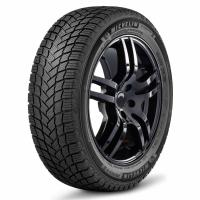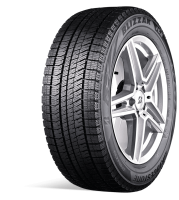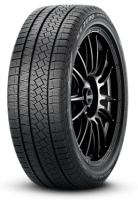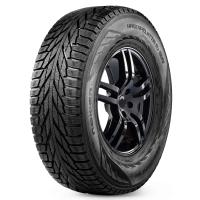The extreme winter specialists at Vi Bilagare are back at it testing the latest and greatest studless friction winter tyres. This year they not only tested seven of the most popular studless friction nordic compounds in the popular 225/45 R17 tyre size, they also included an older tyre to see the effects of aging. The older tyre is an 8 year old, lightly used (6mm remaining) Nokian Hakkapeliitta R2, which has its work cut out as its "two-generation-newer" brother, the Hakkapeliitta R5 is also included in this test!
Due to time constraints we will just present the data, heavy over to the Vi Vilagare website to check out the full article.
Ice
Ice Braking
Ice Traction
Ice Handling
Snow
Snow Braking
Snow Traction
Snow Handling
Wet
Wet Braking
Wet Handling
Straight Aqua
Dry
Dry Braking
Subj. Dry Handling
Comfort
Noise
Value
Fuel Consumption
Results
1st: Continental VikingContact 7 | |||||||||||||||||||||||||||||||||||||||||||||||||||||||||||||||||||||||||||||||||||||

|
The VikingContact7, despite being one of the oldest tires on the market, still performs at the top. Following a third-place finish in last year's test of SUV sizes, Continental is once again number one. The tire manages to maintain steering grip even in really tight curves on ice. It also remains easy to control on snow with a stable rear without sliding tendencies under pressure. Despite its excellent characteristics on winter roads, Continental continues to convince in dry road conditions. The steering feel on asphalt is good; it handles understeering tests well and shows reasonable stopping distances on both wet and dry asphalt. Almost always being top three in every subtest earns it a well-deserved overall victory. The Continental is suitable for all types of winter needs.
To summarize, the VikingContact7 tire by Continental is praised for its exceptional performance across various conditions, from ice and snow to dry asphalt, showcasing its suitability for diverse winter requirements. Read Reviews | ||||||||||||||||||||||||||||||||||||||||||||||||||||||||||||||||||||||||||||||||||||
2nd: Goodyear UltraGrip Ice 3 | |||||||||||||||||||||||||||||||||||||||||||||||||||||||||||||||||||||||||||||||||||||

|
This season's big news is the third generation of UltraGrip Ice from Goodyear. The predecessors have distinguished themselves as Nordic friction tires that perform well on wet roads. The new model retains this market position but has also strengthened its winter grip. It performs at the top in terms of starting and braking on snow and shows good cornering ability. The ice grip is also at a high level, though slightly behind the very best.
The tire is most impressive on asphalt rounds, especially in wet conditions. The steering sensitivity and stability in evasive maneuvers are the best in the group. The same goes for aquaplaning resistance and the stopping distance on wet roads. Goodyear is the best choice if you drive mostly on bare ground but still want good ice and snow grip. Read Reviews | ||||||||||||||||||||||||||||||||||||||||||||||||||||||||||||||||||||||||||||||||||||
3rd: Nokian Hakkapeliitta R5 | |||||||||||||||||||||||||||||||||||||||||||||||||||||||||||||||||||||||||||||||||||||

|
Nokian's latest friction tire scores the most points of all in the snow and ice rounds. It has lively reactions and steers quickly into curves. For a soft friction tire, it is a joy to drive with a cooperative rear that suits the active driver. Conversely, those who prefer a calm and undramatic tire may find the Nokian somewhat too prone to sliding.
On asphalt, it handles evasive maneuvers well, but has a somewhat nonlinear steering feel. Its wet grip properties are just behind the best competitors, as is the road noise. However, the Hakkapeliitta R5 has low rolling resistance. The Nokian tire is suitable for those who prioritize winter road properties above all and appreciate its quick cornering characteristics. Read Reviews | ||||||||||||||||||||||||||||||||||||||||||||||||||||||||||||||||||||||||||||||||||||
4th: Michelin X Ice Snow | |||||||||||||||||||||||||||||||||||||||||||||||||||||||||||||||||||||||||||||||||||||

|
The French friction tire has impressive longitudinal winter grip – that is, acceleration and braking. It has the best stopping distance on ice in the test, and the braking performance on snow also receives the highest rating.
However, Michelin struggles in the curves where it does not like to be stressed with sudden steering movements or in tighter curves, responding with clear understeering. Instead, the tire exhibits good stability on bare ground, where the natural steering feel is also appreciated. However, the understeering balance persists under pressure, especially on wet asphalt. Michelin is for those who prioritize short stopping distances and a good driving experience in everyday situations over maximum cornering ability. Read Reviews | ||||||||||||||||||||||||||||||||||||||||||||||||||||||||||||||||||||||||||||||||||||
5th: Bridgestone Blizzak Ice | |||||||||||||||||||||||||||||||||||||||||||||||||||||||||||||||||||||||||||||||||||||

|
The Japanese Bridgestone is one of the few winter tires with an asymmetric pattern, marked with an inside/outside instead of rolling direction. This favors cornering but results in poorer water properties.
The Blizzak Ice is also one of the softest tires (the rubber's "Shore value" is a low 49). This provides good cornering grip on snow and ice, but it is not as easily controlled at the grip limit on snow as the best ones. Its braking performance on winter surfaces is average. The soft rubber bites well when braking on dry asphalt and has low road noise. However, it lacks stability in evasive maneuvers on dry roads, and its wet grip is one of the worst in the group. Without a clear area of expertise, Bridgestone places a bit behind the top contenders. Read Reviews | ||||||||||||||||||||||||||||||||||||||||||||||||||||||||||||||||||||||||||||||||||||
6th: Pirelli Ice Zero Asimmetrico | |||||||||||||||||||||||||||||||||||||||||||||||||||||||||||||||||||||||||||||||||||||

|
When Pirelli was unable to produce its Nordic friction tire IceZero FR in Russia, they brought over their Asian friction tire Asimmetrico instead. As the name suggests, the tire has an asymmetric pattern (with a dedicated inside/outside instead of rolling direction). It also has a somewhat stiffer carcass and harder rubber than the others, and a higher speed rating.
Braking distances on snow and ice are average. In the corners, Pirelli exhibits quick steering reactions but can lose grip suddenly with a long sliding phase when the grip is lost. The best performance is on dry asphalt. Unfortunately, the braking distances on bare ground and wet grip are the worst in the group, resulting in a modest overall score. Read Reviews | ||||||||||||||||||||||||||||||||||||||||||||||||||||||||||||||||||||||||||||||||||||
7th: Triangle Snowlink PL01 | |||||||||||||||||||||||||||||||||||||||||||||||||||||||||||||||||||||||||||||||||||||

|
The Chinese Triangle tire boasts in its marketing that it was developed in Finland. Despite this, it has an unusually hard rubber compound with poor winter grip. On icy curves, it loses grip at the front without warning, causing the car to understeer heavily without the driver being able to do anything.
Across the ice and snow subtests, the grip level is on par with the used tire in this comparison. In the tests on bare ground, Triangle performs somewhat better compared to the competition, but it never manages to leave the lower half of the results. Disturbing road noise solidifies an already certain last place among the new tires. In fact, the points are not even enough to beat the eight-year-old wildcard entry. It ends up in a shared last place. Read Reviews | ||||||||||||||||||||||||||||||||||||||||||||||||||||||||||||||||||||||||||||||||||||
7th: Nokian Hakkapeliitta R2 | |||||||||||||||||||||||||||||||||||||||||||||||||||||||||||||||||||||||||||||||||||||

|
The used tire, a Nokian Hakkapeliitta R2, was a test winner when it was new in 2015. Now, it is eight years old with about six millimeters of tread depth and harder rubber. There is a noticeable deterioration on ice and snow compared to the new top tires, but it still keeps pace with the brand-new Triangle tire in the winter rounds. The R2 is actually more manageable in curves as it is well-balanced and warns early when the grip limit is approaching.
On asphalt, the lower tread depth provides an advantage in terms of braking and consumption, but it causes problems with aquaplaning instead. High wear on the outer part of the front tires results in poor cornering grip. It is concluded that new tires offer a clear increase in safety – but only if you purchase the best ones. Read Reviews | ||||||||||||||||||||||||||||||||||||||||||||||||||||||||||||||||||||||||||||||||||||



